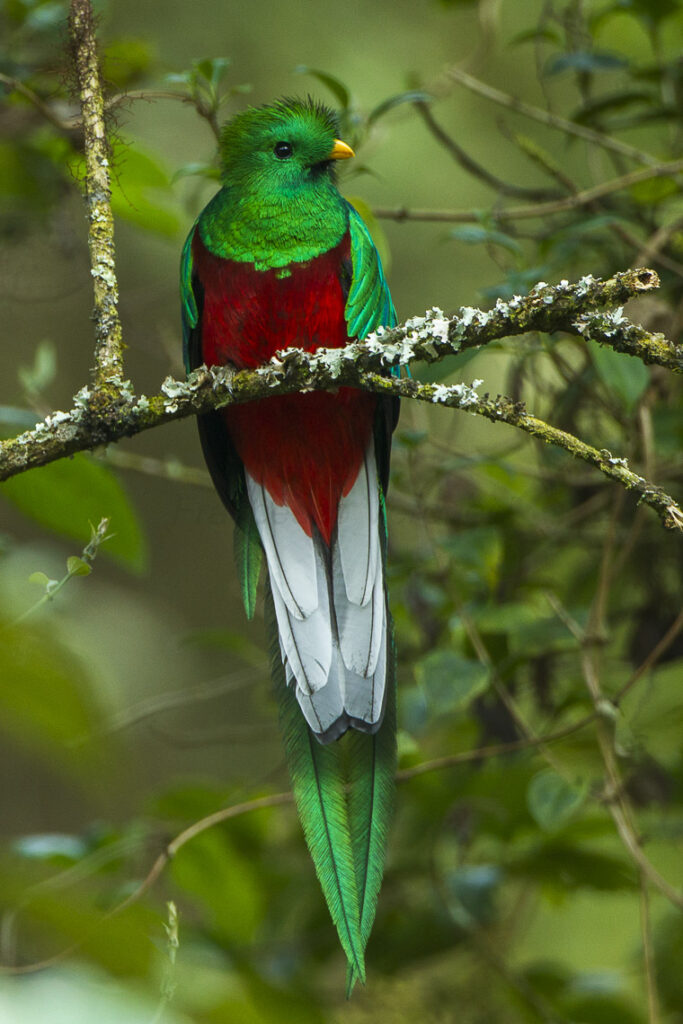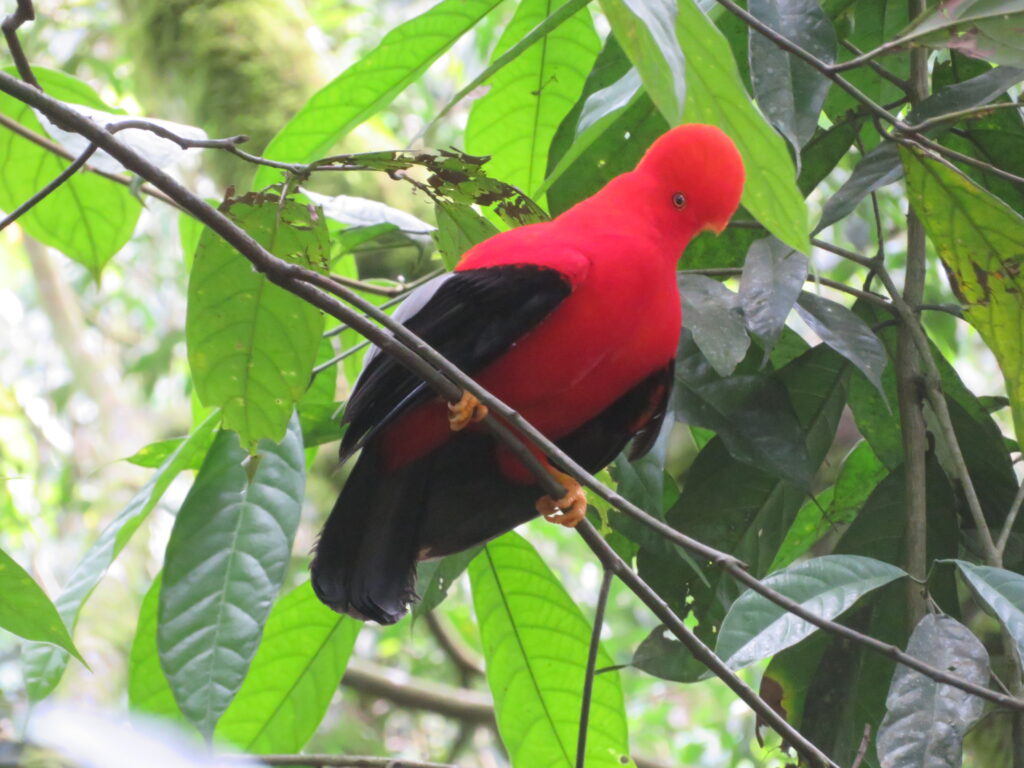The general assumption here is that the brightest, most active, aggressive, colorful males (and sometimes females) attract the best or most (for polygamous species) females, ensuring that their offspring have the best genes. It’s also reasoned that this is a tradeoff as the most obvious males would be most likely to attract predators and/or be more susceptible to predators as they may not be able to fly as well with long tails (for example), but it’s worth the risk.

Many male birds exhibit plumage of iridescent blues, greens, and purples to vivid combinations of red, yellow, and black. Think of the Peacock‘s colorful tail feathers and the Resplendent Quetzal‘s brilliant iridescent green feathers. Other species’ males may possess ornate feathers or specialized feather structures for courtship displays. For instance, the long, flowing tail feathers of birds such as the Birds-of-Paradise or the Lyrebirds are used to attract the opposite sex. Then there are the male birds with special crests or head ornaments that they use to make themselves obvious. The Black and Grey Crowned Cranes, for example, have a striking golden crown of feathers on their heads. Similarly, both sexes of the Crested Auklet both sexes receive higher levels of sexual interest and displays from the opposite sex compared to those with smaller crests. Crested auklets with larger crests are more likely to obtain mates and to form pair bonds earlier.
Some birds possess enlarged or brightly colored bills which they use as a part of their courtship rituals. The Atlantic Puffin has a brightly colored bill that grows more vibrant during the breeding season. The characteristic bright orange bill plates and other facial characteristics develop in the spring. Male Frigatebirds have a bright red throat pouch that they inflate during courtship to attract females. Male Pelicans sport a fin-like structure on the top of their bill during breeding season.

And then there are courtship dances and displays: Many male birds engage in complex courtship dances or displays to attract females. For instance, the male Sage Grouse performs an elaborate display called “strutting” which involves puffing up its chest, fanning its tail, and making distinctive sounds. During the height of Cock-of-the-Rock males gather in leks with multiple males defending a social display arena of much greater area than that of a lone male. The males have their own area on the forest floor where they make their courts, about 1 meter (3 ft) in diameter. The females and males live separately; only when it is time to mate do females fly over to observe and choose a male.
Cock-of-the-Rock photo courtesy of Bruce Kronmiller
So somehow being obvious is advantageous to attracting a mate, in spite of risks. But perhaps these males find a way to minimize risks. One idea to explain this is the FEAR hypothesis – Flush Early and Avoid the Rush; this idea predicts that prey will generally flee soon after they detect a predator so as to minimize the costs incurred by monitoring the predator. So perhaps the more burdened a highly decorated and thus obvious male is, the sooner they flush to avoid being eaten. Food for thought.
Yeah they can see the bright colors but isn’t it kind of like a warning when something’s really poisonous I don’t like some colors scare predators you have to move that but I didn’t read it all